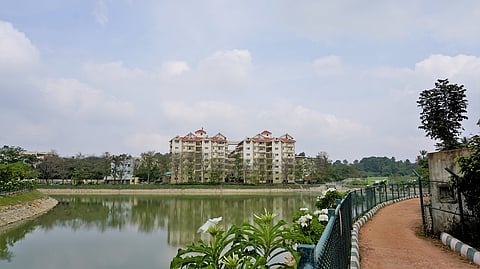Besides river waters, India has upstream and downstream conflicts over wastewater too
Till now, post-independent India has usually seen conflicts over the usage of river waters between upstream and downstream states. But now, upstream and downstream conflicts over wastewater flows have started surfacing in the country. Take the example of Bengaluru.
The Bengaluru Water Supply and Sewerage Board (BWSSB) has the mandate to handle wastewater management, development, transaction, and monitoring for the entire southern metropolis.
About two million households are sewer-connected, and the wastewater collected from them flows down to three valleys: Koramangala-Challaghatta valley, Hebbal-Nagawara valley, and Vrishabhavathi valley.
A total of 1,190 million litres per day (MLD) of wastewater is treated in 29 sewage treatment plants (STP) located in these valleys out of the 1,440 MLD of total sewage generated.
These valleys are part of the Cauvery and Dakshina Pinakini river basins. Most water flowing into the Dakshina Pinakini river is sewage from Bengaluru city. Cauvery water is also augmented with wastewater from the city.
The wastewater from the Dakshina Pinakini is supplied to drought-prone Kolar, Chikkaballapur, Bengaluru Rural and Tumakuru regions for agriculture by the Karnataka irrigation department.
Conflicts have now started surfacing between BWSSB and the state irrigation department about who will bear the wastewater treatment cost. The department is of the view that the cost should be borne by the city. But the BWSSB is asking for cost-sharing as the wastewater is used by the department.
Whose responsibility?
The intra-state conflict, between two jurisdictions, overflowing wastewater, raises some interesting questions.
Does the city have the right to release wastewater downstream if it cannot use it for a suitable purpose initially and then stop it when it is consumed within its limits? Usage of wastewater within urban limits is considered to be of higher value as it is used being used to replace freshwater. What is the reliability of continuous availability for a user downstream? If it is not a reliable source, investments in the development and maintenance of asset storing and transporting sewage cannot be the responsibility of the user, the irrigation department in this case.
A related question will be who bears the infrastructure cost of such wastewater use? For the city, it is necessary to take it out of its limits, and a disposal permit — like in Mexico — may be a useful mechanism in such cases that allows the city to drain its sewage out of its limits at a cost to maintain the infrastructure required for this drainage.
The rivers flowing within the city are under the administration of the municipality and they have usage rights over them. When water is released, it flows downstream. Should usage rights over it be then of the downstream user?
Part of the wastewater released by Bengaluru city flows into the Dakshin Pinakini river and reaches the state of Tamil Nadu. Inter-state conflicts on river waters are long-standing.
Tamil Nadu is a downstream state of the Dakshin Pinakini river, receiving water flowing from Karnataka, mixed with wastewater disposed of from Bengaluru city. In addition to the quantities of water from the Cauvery, Tamil Nadu had grievances regarding the sewage being disposed of, and the matter was adjured in the Supreme Court. However, when the Karnataka government decided to divert the treated wastewater to drought-prone areas of Karnataka, Tamil Nadu approached the Supreme Court again to stop this diversion.
Effective resolution of these conflicts requires a collaborative approach that considers both urban and agricultural (rural) needs, equitable cost-sharing mechanisms, and sustainable management practices.
Addressing these challenges is crucial not only for the health of the Cauvery and Dakshina Pinakini river basins but also for fostering cooperative relationships between states and ensuring long-term water security in the region. Such conflicts are likely intra-state between upstream and downstream entities, with increasing water scarcity.
Alka Palrecha is Director, People in Centre, Ahmedabad
Views expressed are the author’s own and don’t necessarily reflect those of Down To Earth

